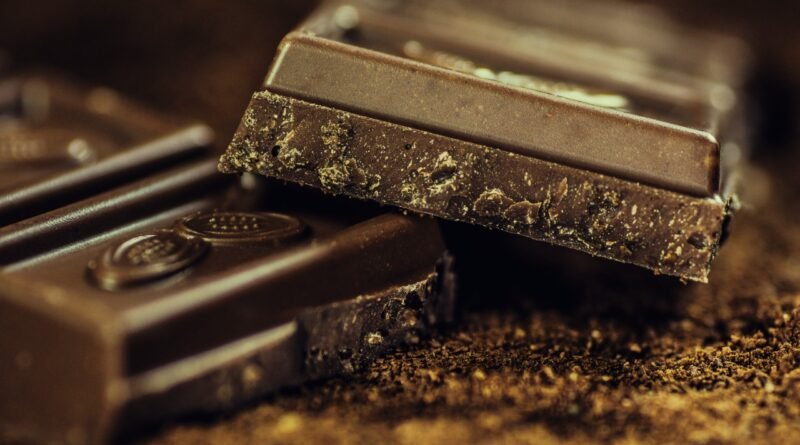Diet for CKD Patients: Is chocolate safe for CKD?
The age-old question for chocolate lovers answered
Chocolate and its antioxidants
Antioxidants in food are known to protect the body against chemicals called “free radicals” that damage cells. Cocoa is a known source of antioxidants and a few years ago, doctors from the University Hospital Düsseldorf in Germany led by Dr. Tienush Rassaf examined the helpful benefits of dietary cocoa flavanols to patients in hemodialysis.
Chocolate is rich in epicatechin and catechin, two of the many kinds of antioxidants, which, as mentioned earlier, are also abundant in tea, coffee, grapes, and blueberries. Catechin is part of the family of flavonoids, which are among the most powerful antioxidants (Panche, Diwan, & Chandra 2016).
Dark chocolate is shown to have more flavonoids than milk chocolate because it contains more cocoa—one study has shown that polyphenols, or plant chemicals, are less likely to be absorbed and used by the body in the presence of milk. Higher in cocoa content than other variants such as milk chocolate or white chocolate, dark chocolate would be expected to contain an even higher level of polyphenols. This is not always the case, however, as the amount of polyphenol present depends also on the type of cocoa being used and how it has been processed. Cocoa fermentation in particular can destroy a lot of the flavanol content.
The consumption of cocoa and dark chocolate has long been associated with a lower risk of several cardiovascular diseases as its cocoa flavanols have been shown to be able to limit the progression of cardiovascular disease by exerting anti-blood clotting, anti-inflammatory, and antioxidant activity (West, et al 2014). However, traditional recommended diets prescribed to CKD patients do not usually include chocolate or any cocoa products (Cupisti & Kalantar-Zadeh, 2013). This is because chocolate is rich in potassium (Uniejewska 2019) and phosphorus (Cinquanta, Di Cesare, et al 2015). Limit intake of food rich in both.
Dark chocolate, however, is rich in phytates—the principal storage form of phosphorus—but here is the twist: high content of this type of phosphorus, as asserted by nephrologists Cupisti & Kalantar-Zadeh, “should not cause a real dietary burden” (2013). This is a stark contrast to the common diets for CKD patients.
| P mg
100 g Food |
P to Protein
mg/g |
P mg per
Serving |
|
| Dark chocolate | 186 | 32 | 56 |
| Milk chocolate | 207 | 23 | 62 |
Moderation is still the key
Recommending the dark chocolate over the other variants as it contains more antioxidants, the National Kidney Foundation (2012) tells us:
| “In moderation, dark chocolate may be a healthier option than many other desserts such as cookies, candies and cakes so keep this in mind when looking to satisfy your sweet tooth and consider choosing dark chocolate as an alternative.” |
The phytonutrients, or plant chemicals, found in foods such as high-cocoa-solid chocolates, decrease the risk of death from cardiovascular disease, stroke, and cancer (Rostami, et al., 2015). Furthermore, CKD patients with diabetes can take delight that intake of chocolate: Intake of chocolate, particularly the dark chocolate variant, was followed by a significant decrease in blood pressure—without affecting weight, body mass index, and glycemic control, or levels of sugar in the blood—and a significant increase in sensitivity of the body cells to insulin (Rostami, et al 2015). Dark chocolate actually improves blood pressure in CKD patients with risk factors such as diabetes and hypertension.
The same researchers further proposed that daily consumption of chocolate (that is, 25 g daily) containing high-cocoa solids for 8 weeks would improve cardiovascular risk factors in patients with diabetes and hypertension (Rostami, et al 2015). But the National Kidney Foundation (2012) suggests limiting to approximately 100 calories— four (4) teaspoons of semisweet chocolate chips or 1.5 squares of a dark chocolate bar—which is considered a good portion size for a snack.
Apart from that, chocolate, particularly chocolate chips, and other foods with added fiber were found to lower serum creatinine levels in the kidneys (Salmean, et al., 2013). Take note that a high serum creatinine level in the blood signifies that the kidneys are not functioning properly
| Trivia: Among the top food/food group energy sources in children (2-18 years old) who are CKD patients, chocolate ranked tenth, along with candy and sugary foods (Chen et al 2017). |
The key point here is moderation. Eat mindfully. Enjoy a couple of squares instead of an entire bowl or bar of chocolate. The National Kidney Foundation (2012) further suggests “to choose chocolate covered nuts or dried fruit, instead of candies or truffles that contain a caramel, cream, or jelly filling.”




